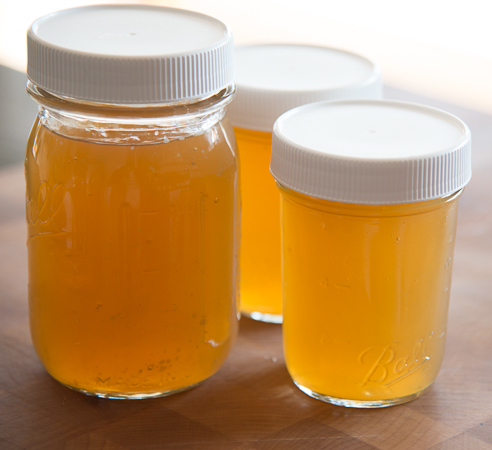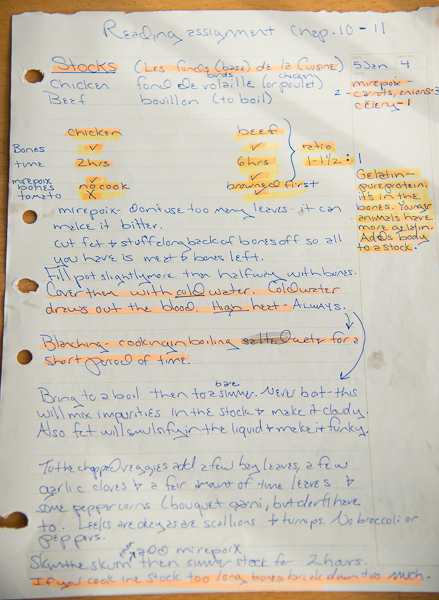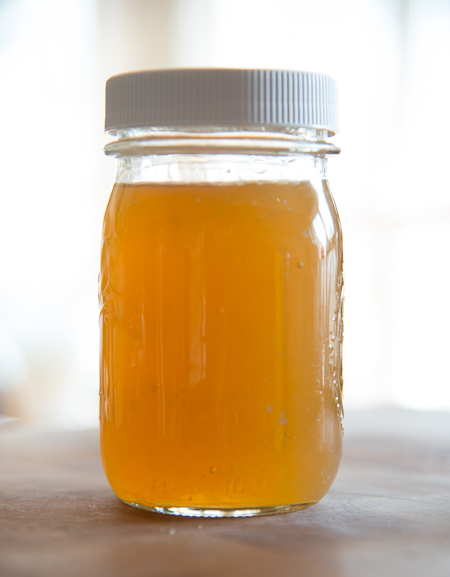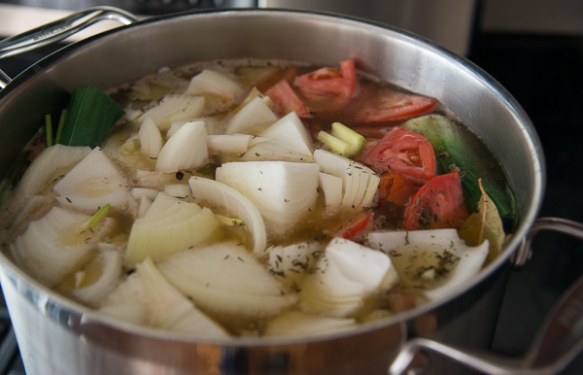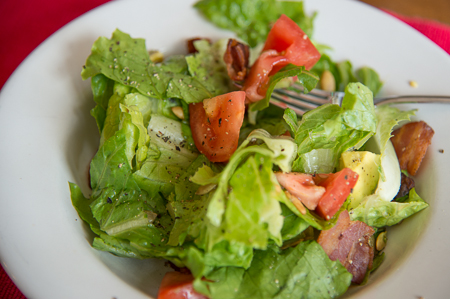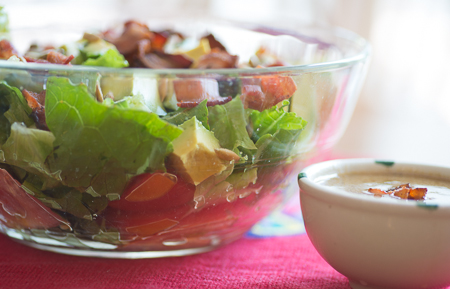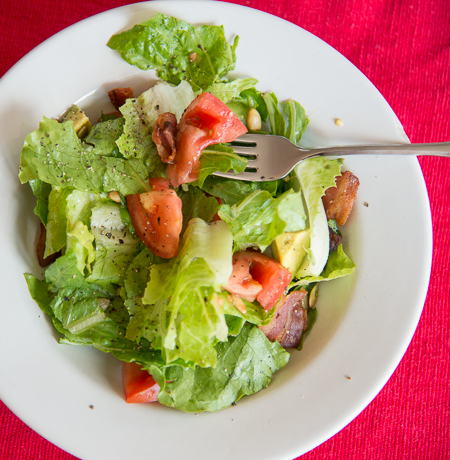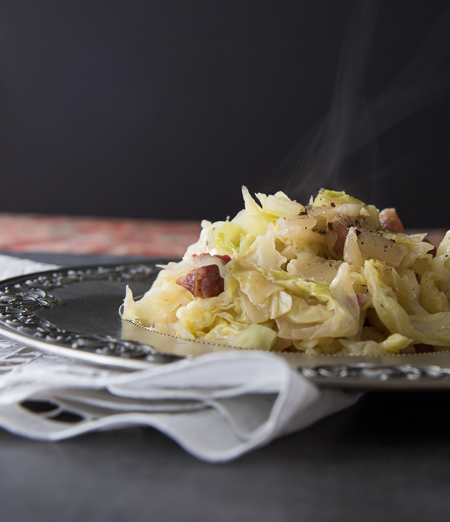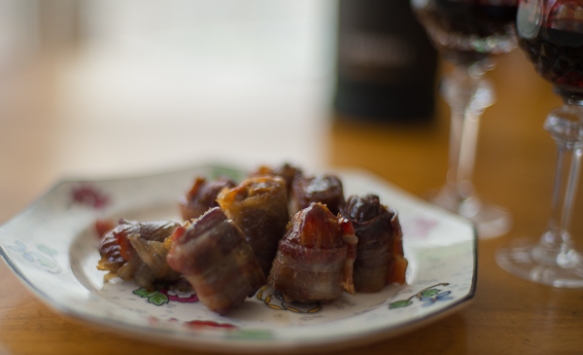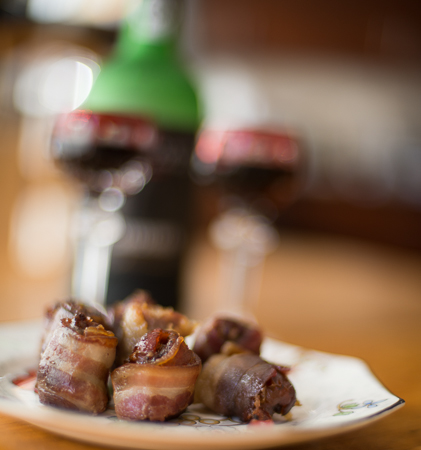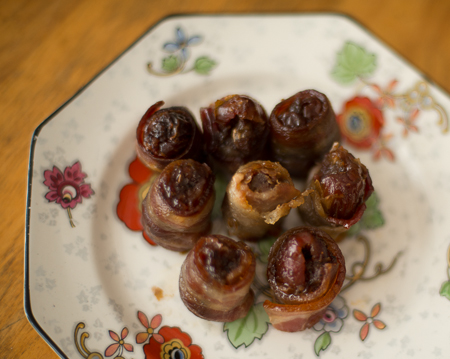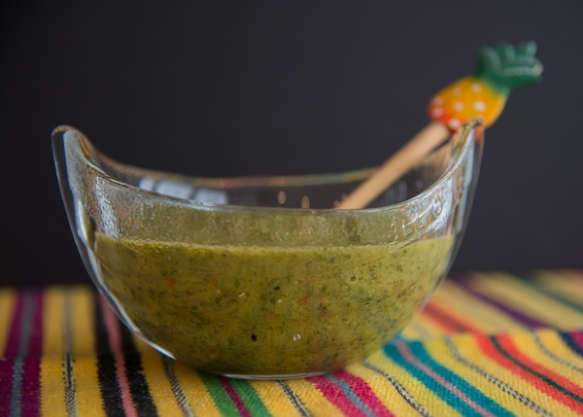
Cilantro, or fresh coriander, is a plant that is popular in Asian, Latin American, and Middle Eastern cuisines. Various parts of the plant have different uses and tastes. The seeds, when dried, are used for pickling or ground and used for flavoring dishes. The leaves and stems are usually chopped fine and used as a fresh note to add final flavor to a dish. People who like cilantro love the fresh lemony, lime taste it adds to foods. But there is another group of people who can’t stand it, saying it tastes soapy or rotten. I saw this first hand when I lived in Colombia, and believe me, the people who don’t like cilantro really, really don’t like it. That’s rough for someone who has just been assigned to Bogota, where they put it on just about everything. But, if like me, you like cilantro, you will love this sauce that I adapted from Steven Raichlen’s Healthy Latin Cooking.

I discovered cookbook author Steven Raichlen long before he became the barbecue and grilling guru he is today. In his former life he wrote cookbooks about “healthy low fat” (remember those days?) cooking with a lot of spice and flavor. I’m not a fan of low fat cooking; however, his recipes are so flavorful, I still have a couple of his older books and still use them. He has also traveled the world extensively and the knowledge he has gained is put to good use in his cookbooks.
This sauce is one of those recipes that can be used in many different ways. The first night I made it, I spooned it over some pan-fried salmon. It’s great with tortilla chips, especially for dinner when you are too tired to cook, as I discovered one evening. Later that week I added a splash more olive oil and vinegar to create a salad dressing. I used what was left to marinate some chicken thighs that I cooked on the grill. That’s just what I did with it. I’m sure there are more possibilities.
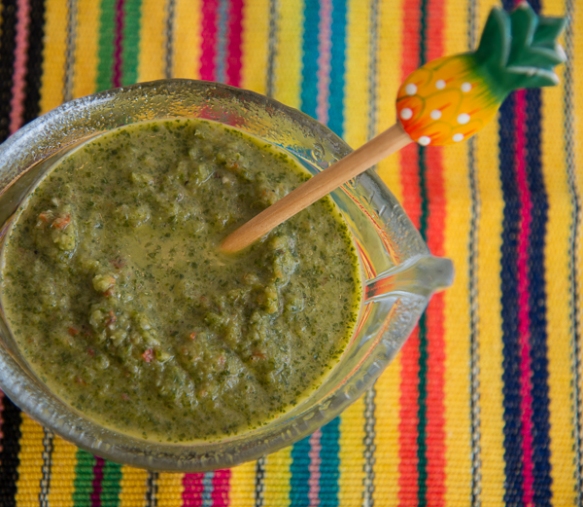
Puerto Rican Cilantro Sauce
This sauce will keep up to 3 weeks in the refrigerator, so you have plenty of opportunity to experiment with it. I made this in the food processor, but it can be made in a blender. Place all the ingredients into the blender container at once and blend to desired consistency. Because the sauce is pureed, you don’t have to meticulously pick off each cilantro leaf. Just chop the stems off at the base of the leaves and discard them.
1 small onion, peeled and quartered
3/4 red bell pepper, cut into 1” chunks
1/2 green pepper, cut into 1” chunks
2 scallions, trimmed and cut into 1” pieces
3 cloves garlic, peeled
1 bunch cilantro, stemmed
1/2 teaspoon dried oregano
1/4 cup extra-virgin olive oil
1/4 cup red wine vinegar
1/4 cup water
salt and pepper, to taste
1. Combine the onion, peppers scallions, garlic, cilantro and oregano in a food processor and chop.
2. Add the oil, vinegar, and water and puree until smooth. Season with salt and pepper.
3. Transfer to glass jar for storage.
Adapted from Steven Raichlen’s Healthy Latin Cooking

